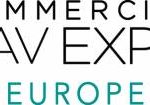AUVSI XPONENTIAL 2018
XPONENTIAL 2018, held at the Colorado Convention Center, puts the power of knowledge in your hands through a comprehensive educational program that brings the unmanned industry’s newest developments to the forefront and offers expert insight into the issues that are driving the forward momentum of the unmanned systems movement.
By Inside GNSS













